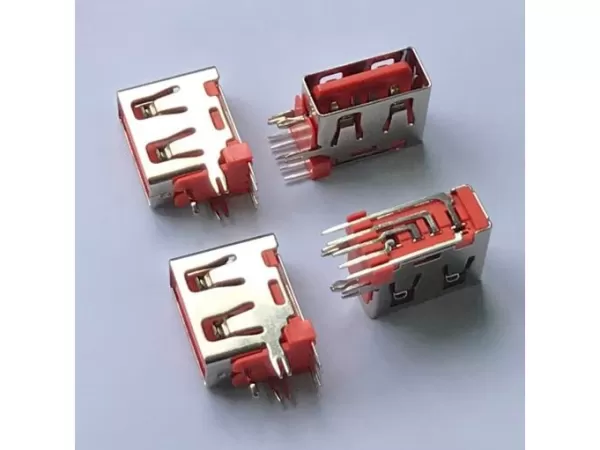Do you know how to distinguish the quality of USB connector?
Date:2024-08-19

1. Appearance inspection
- Housing quality : The housing of a quality USB connector is usually made of a strong, hard-wearing material, such as metal or high-quality plastic. Check the housing for scratches, dents, or uneven finish, which may be a sign of poor workmanship on a low-quality connector.
- Contact pins : Check that the metal pins inside the USB connector are neatly arranged and have a smooth surface. High-quality pins are usually gold-plated or nickel-plated, with bright and uniform color and no signs of oxidation or corrosion.
2. Structure and design
- Smooth plugging and unplugging : When plugging and unplugging a USB connector, it should feel smooth, without any lag or looseness. High-quality USB connectors usually have a better plugging and unplugging experience and can maintain this experience after multiple uses.
- Locking mechanism : The USB connector should have a strong locking mechanism to ensure that it can firmly contact the device when inserted and is not easy to loosen or fall off.
3. Materials and Process
- Contact material : The material and plating of the pins are key indicators. Usually, high-quality USB connectors use gold-plated pins because of their good conductivity and oxidation resistance.
- Shell material : Check whether the shell material is durable and not easy to deform. Plastic shells should have no obvious burrs or flashes, and metal shells should have no sharp edges or burrs.
4. Performance Testing
- Electrical performance test : Use a multimeter or special test instrument to check the resistance, conductivity and insulation of the USB connector. A high-quality USB connector should have low contact resistance and good conductivity.
- Transfer speed test : Connect the USB connector to a device that supports high-speed transmission (such as USB 3.0 or USB 3.1) to test the data transfer speed. A high-quality connector should be able to achieve its nominal transfer rate.
- Current and voltage test : Test the current and voltage performance of the USB connector in actual use to ensure that it can stably provide the nominal current and voltage without overheating or instability.
5. Durability
- Plug and unplug test : A high-quality USB connector should be able to withstand multiple plug and unplug operations without damage or performance degradation. The general standard USB 2.0 requires at least 1,500 plug and unplug cycles, while USB Type-C requires at least 10,000 cycles.
- Environmental adaptability test : According to the usage scenario, the temperature resistance, shock resistance, waterproof and dustproof performance of the USB connector is tested to ensure that it can still work normally under extreme conditions.
6. Certification and standards
- USB-IF Certification : Checks whether the connector has been certified by the USB Implementers Forum (USB-IF). This ensures that the connector complies with the design and manufacturing specifications of the USB standard.
- RoHS Certification : Ensure that the connector complies with the RoHS directive, which means it does not contain harmful substances and is more environmentally friendly.
7. Brand and Manufacturer
- Choose a well-known brand : Generally, USB connectors from well-known brands have strict quality control in design and manufacturing, and can provide more reliable products.
- Check the manufacturer information : Check whether the manufacturer information and product specifications are clearly marked on the packaging or the product itself. USB connectors produced by regular manufacturers usually have clear markings.
8. User reviews and feedback
- User Reviews : Check other users' reviews of this USB connector model to understand its actual performance and possible problems.
- Expert reviews : If possible, check the review reports on professional review websites or technical forums to learn about experts' analysis and evaluation of the connector.
Summarize
The quality of USB connectors can be comprehensively judged through appearance inspection, performance testing, material and process evaluation, certification and standard confirmation, as well as reference to user reviews and brand reputation. Choosing USB connectors that meet these standards can ensure that they provide stable and reliable performance in actual use.